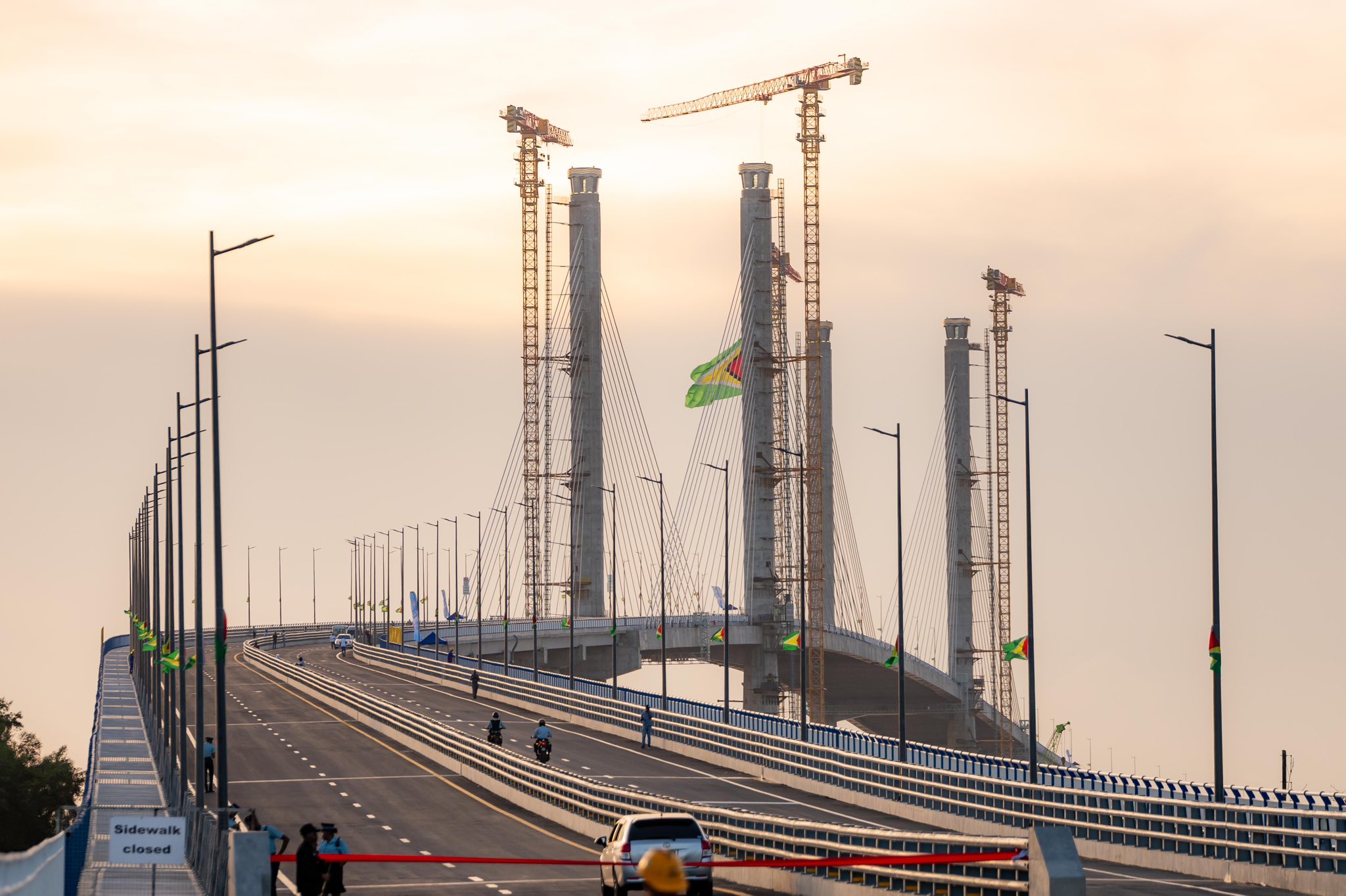Guyana’s skyline has a new landmark. On October 5, the much-anticipated New Demerara River Bridge officially opened, a 2,800-meter marvel that is already being hailed as a symbol of modern engineering, local collaboration, and strengthened China–Guyana relations.
President Dr. Mohamed Irfaan Ali officially named the state-of-the-art structure the Bharrat Jagdeo Demerara River Bridge (BJDRB) to honor former President and current Vice President, Dr. Bharrat Jagdeo.
Constructed by China Railway Construction Corporation (CRCC) and its subsidiaries, the bridge replaced the aging floating structure that served commuters for decades. It promises to cut travel time by 75% and double the river’s navigation capacity, significantly improving movement between Regions Three and Four — two of Guyana’s busiest districts. CRCC said the bridge “brings a significant boost to the local economy”, reflecting its importance to trade, transport, and everyday life.
The project’s design showcases precision and strength. Spanning 2,798 meters exactly, the four-lane, high-span, cable-stayed structure includes a 570-meter main span supported by elegant pylons and a 50-meter clearance that allows Handymax-class vessels to pass freely beneath. At 25 metres wide, it accommodates four vehicular lanes with 1.5-meter shoulders and two dedicated 2.7-meter pedestrian and cycling walkways, a rare feature for major bridges in the region.
US$260M Demerara bridge to improve traffic flow in oil-driven Guyana | OilNOW
Its engineering is equally remarkable. A total of 658 piles were driven deep into the riverbed. The main towers were each supported by 76 piles, each measuring eight feet in diameter and extending 400 feet below the surface, arguably among the strongest foundations ever built in Guyana. The bridge deck is held by 136 high-tension cables and reinforced with 472 precast concrete girders, ensuring both durability and balance.
Built to last a century, the BJDRB meets international standards, including those of the American Association of State Highway and Transportation Officials (AASHTO) for design, the American Society for Testing and Materials (ASTM) for material testing, and ISO-certified construction benchmarks. It was also constructed using advanced techniques such as Building Information Modelling (BIM), ultra-long pile installation, and smart temperature control, tools that helped overcome challenging geology and unpredictable weather during the rainy season.
Beyond its technical brilliance, the project reflects a commitment to people and the environment. More than 300 local technical workers were trained during construction, helping transfer skills to Guyanese engineers and builders, according to CRCC.
CRCC also said the design “incorporated local culture” and emphasized mangrove protection, blending modern infrastructure with ecological and community sensitivity.
For Guyana, the BJDRB is more than a crossing; it is a promise of progress. Stretching gracefully across the Demerara River, it stands as what many are calling the nation’s new engineering masterpiece.



